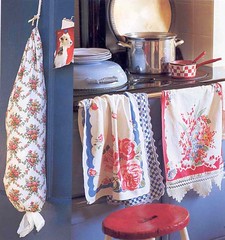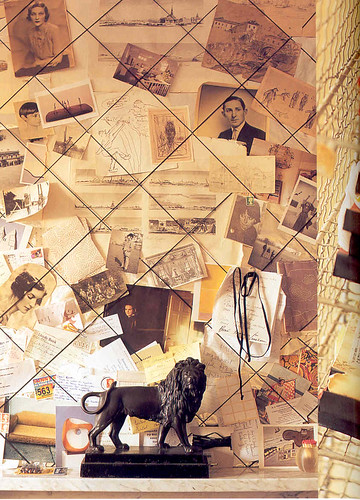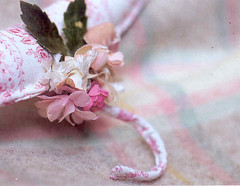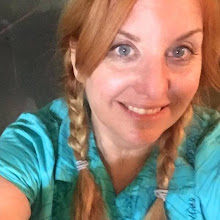Shabby Chic ideas
I just finished reading Vintage Style: creating a complete look for your home, by Cath Kidston.
Not only are the images inspiring, but so is her story.
The bedroom of her girlhood had curtains and duvets in luscious floral fabrics like cabbage roses, but in the early 90's when she was looking for contemporary fabrics, the ones she loved were no longer in vogue.
She decided to make a reproduction rose fabric on her first project--ironing board covers.
The covers were so popular, Kidston stepped into a full blown, and now very successful interior design business.
What I admire about that the most is that she didn't shy away from what she intuitively loved.
She wasn't swayed by popular thought.
Her story, therefore, is a wonderful example of staying true to yourself.
Here are some ideas from the book that I find inspiring:

(click on images to enlarge)
For her own kitchen, Kidston chose a palette of red, white, and blue.
She uses vintage linens, even if the edges are frayed or the sizes are off.
For tablecloths that are too small, she just adds fabric borders (sometimes white, sometimes gingham, sometimes a contrasting color).
For cloths with frayed edges or worn spots, she adds crocheted trims.

She made a memo board in her office from a large cork piece covered in foil then crossed in a grid of black elastic.
The piece now becomes a focal kitsch, a work of art, a collection of ideas and photographs.
For a fun gift idea, or a display in a guest room, make padded fabric hangers.

Kidston says it's easier to cover a hanger that is already padded, then you can add embellishment if you desire (artificial flowers, beads, etc).
Another idea would be to stuff the padding with fresh lavender, especially if you grew it in your own garden.

A friend made her this fabric food cover, using a vintage scrap of fabric.
The edges are trimmed in rickrack, then weighted with pieces of a broken necklace.
Not only are the images inspiring, but so is her story.
The bedroom of her girlhood had curtains and duvets in luscious floral fabrics like cabbage roses, but in the early 90's when she was looking for contemporary fabrics, the ones she loved were no longer in vogue.
She decided to make a reproduction rose fabric on her first project--ironing board covers.
The covers were so popular, Kidston stepped into a full blown, and now very successful interior design business.
What I admire about that the most is that she didn't shy away from what she intuitively loved.
She wasn't swayed by popular thought.
Her story, therefore, is a wonderful example of staying true to yourself.
Here are some ideas from the book that I find inspiring:

(click on images to enlarge)
For her own kitchen, Kidston chose a palette of red, white, and blue.
She uses vintage linens, even if the edges are frayed or the sizes are off.
For tablecloths that are too small, she just adds fabric borders (sometimes white, sometimes gingham, sometimes a contrasting color).
For cloths with frayed edges or worn spots, she adds crocheted trims.

She made a memo board in her office from a large cork piece covered in foil then crossed in a grid of black elastic.
The piece now becomes a focal kitsch, a work of art, a collection of ideas and photographs.
For a fun gift idea, or a display in a guest room, make padded fabric hangers.

Kidston says it's easier to cover a hanger that is already padded, then you can add embellishment if you desire (artificial flowers, beads, etc).
Another idea would be to stuff the padding with fresh lavender, especially if you grew it in your own garden.

A friend made her this fabric food cover, using a vintage scrap of fabric.
The edges are trimmed in rickrack, then weighted with pieces of a broken necklace.




2 Comments:
Great inspiration and ideas for vintage living! Thanks for sharing in this fun and interesting blog!
I do like the Kath Kidson style- more floral country at a time when minimalism was in. Her latest book "make" is more about buy and them embellish it yourself. I ended up not buying it.
Post a Comment
<< Home